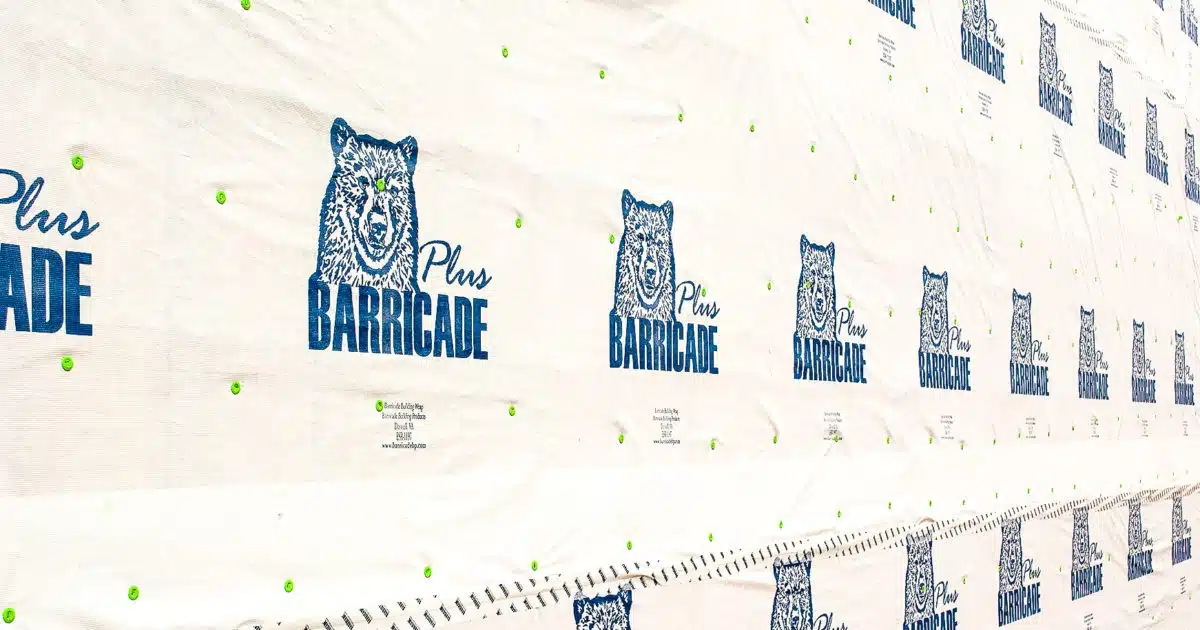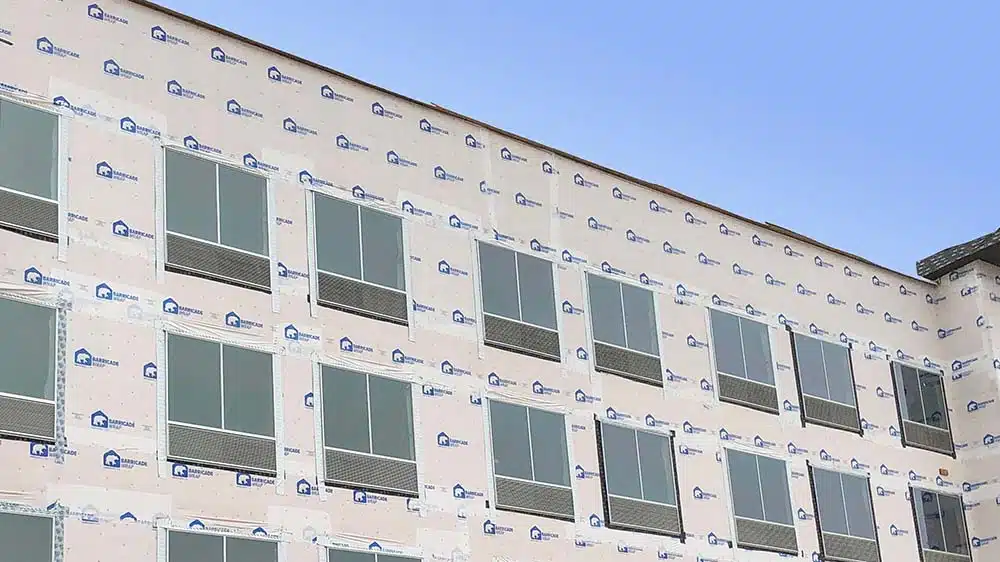To prevent thermal bridging in a building’s envelope, contractors must apply continuous insulation that is correctly installed and of high-quality, like Barricade’s Building Wraps. Continuous insulation ensures a tight building envelope without thermal bridges, which is essential for today’s sustainable, energy-efficient, healthy and durable buildings and homes.
What are Thermal Bridges?
A thermal bridge happens when there is a break in the building’s envelope. Typical spots for thermal bridges are at the junctions between the wall, floor or roof, around holes for cables and pipes, and near windows and doors. Thermal bridges reduce the effective R-value of the wall assembly because thermal bridges allow heat and energy to flow through the building envelope. Ultimately, thermal bridges diminish the energy-efficiency of a building or home, along with the comfort level of the occupants.
Thermal bridges also increase the risk of condensation within the wall system. Condensation occurs when the temperature inside the wall assembly drops below the dew point. The dew point is the temperature where the water in the air condenses into liquid water. The result of condensation is moisture accumulation within the wall assembly. Moisture in the wall system can cause the growth of rot and mold. Rot destroys the integrity of a structure and mold diminishes the indoor air quality (IAQ).
What is Continuous Insulation?
Continuous insulation controls the flow of air through gaps in the building’s envelope caused by thermal bridges, along with areas around door and window frames, attics, electrical outlets, fireplaces, dryer vents, and chimneys. Notably, the ASHRAE 90.1 and 2015 IECC require continuous insulation. The standard defines continuous insulation as insulation that is continuous across all structural members without thermal bridges other than fasteners and service openings. The quantity of insulation is mandated (as indicated by the R-value) by the standard and depends on the structure’s climate zone.
How to Prevent Thermal Bridging with Continuous Insulation
Preventing thermal bridging is accomplished by covering the entire building envelope, except openings for windows, doors, skylights, and building service systems, with a continuous layer of thermal insulation (continuous insulation). Ultimately, the goal of continuous insulation is to stop thermal bridging, reduce the risk of mold and rot by eliminating condensation, and save energy and money. Importantly, a high-quality house wrap, like Barricade® Building Wraps, along with properly installed insulation, are both essential to achieving continuous insulation and preventing thermal bridges.
A Best Practice to Prevent Thermal Bridging – Barricade Building Wraps
A best practice to prevent thermal bridges is to ensure continuous insulation with an application of a high-quality moisture and air barrier like Barricade® Building Wraps, along with correctly installed insulation. Barricade® Building Wraps are water- and air-resistant and permeable.
- BARRICADE® WRAP PLUS and BARRICADE® R-WRAP® pass all the requirements used to evaluate a house wrap’s water resistance: AATCC Test Method 127, ASTM D779 (boat test), and CCMC 07102 (pond test).
- BARRICADE® WRAP PLUS and BARRICADE® R-WRAP® have a strong level of air resistance and are in accordance with the IECC (Section 502.4 and 402.4) and the IRC (Section N1102.4.1).
- Barricade® Building Wraps are permeable to vapor which ensures the wall system will drain and dry infiltrated moisture. The ASTM E96 standard requires house wrap with five perms or bigger; however, the greater the perm, the more permeable the product. All Barricade® Building Wraps achieve more than five perms.
- BARRICADE® WRAP – 11 US Perms
- BARRICADE® WRAP PLUS – 16 US Perms
- BARRICADE® R-WRAP® – 50 US Perms
Preventing thermal bridging in buildings and homes involves an application of continuous insulation. Continuous insulation ensures a tight building envelope and creates energy-efficient, durable, and healthy structures. An excellent product for achieving continuous insulation and preventing thermal bridging is Barricade® Building Wraps.
Please visit Barricade® Building Products for more information on how to prevent thermal bridging.


